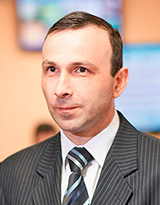Features of Structural Hardware Transformation of Information in Cryptosystems
https://doi.org/10.35596/1729-7648-2024-22-5-80-88
Abstract
The article considers types, functions and some features of cryptosystems, as well as circuit design options for expanding their functionality. Options for generating keys and ciphers used in cryptosystems with a typical structural organization, and technologies for creating encryption chains are presented. An encryption scheme is described, in the recurrent formula of the algorithm of which the previous blocks of both encryption and plaintext are used. This scheme reliably protects against any unauthorized modification of the encrypted text. Structural diagrams of the organization of symmetric and asymmetric cryptosystems are given. A variant of implementing a decoding procedure in a threshold MIMA cryptomodule for sharing a secret with a masking transformation is proposed, in which the necessary time and hardware costs for performing the procedure of reconstructing the original secret are minimized. The presented material can be the part of the original sections of a necessary and sufficiently provided in mathematical terms textbook on the basics and modern problems of cryptography.
Keywords
About the Authors
A. F. ChernyavskiyBelarus
Chernyavskiy A. F., Dr. of Sci. (Tech.), Academician of the National Academy of Sciences of Belarus, Professor, Professor at the Department of Intelligent Systems, Belarusian State University (BSU)
Minsk
E. I. Kozlova
Belarus
Kozlova Elena Ivanovna, Cand. of Sci., Associate Professor, Head of the Intelligent Systems Department
220030, Minsk, Nezavisimosti Ave, 4
Tel.: +375 17 209-58-36
Yu. A. Chernyavskiy
Belarus
Chernyavskiy Yu. A., Cand. of Sci., Associate Professor, Associate Professor at the Department of Informatics
Minsk
References
1. Kharin Yu. S. (2003) Mathematical and Computer Foundations of Cryptology. Minsk, Novoe Znanie Publ. (in Russian).
2. Konev I. R., Belyaev A. V. (2003) Information Security of an Enterprise. St. Petersburg, BHV-Petersburg Publ. (in Russian).
3. State Standard of the Republic of Belarus STB 34.101.47–2017. Information Technology and Security. Cryptographic Algorithms for Generating Pseudorandom Numbers (in Russian).
4. Chernyavsky A. F., Kozlova E. I., Kolyada A. A. (2023) Features of Machine Arithmetic of High-Performance Modular Computing Structures. Journal of the Belarusian State University. Mathematics. Computer Science. (2), 94–101 (in Russian).
5. Chervyakov N. I., Kolyada A. A., Lyakhov P. A. (2017) Modular Arithmetic and Its Applications in Infocommunication Technologies. Moscow, Fizmatlit Pabl. (in Russian).
6. Kolyada A. A., Protasenya S. Yu., Chervyakov N. I. (2015) Modular Interpretation of Messages in Information Security Systems. Infocommunication Technologies. 13 (3), 245–252 (in Russian).
7. Kolyada A. A., Kuchinsky P. V., Chervyakov N. I. (2019) Threshold Method of Secret Sharing Based on Redundant Modular Computing Structures. Information Technologies. 25 (9), 553–561 (in Russian).
8. Chernyavsky A. F., Kolyada A. A., Protasenya S. F. (2020) Method of Division by Binary Exponent for Performing a Decoding Operation in a Threshold Mini-Cryptomodule for Sharing a Secret in a Masking Transformation. Theoretical and Applied Cryptography: Proceedings of the International Scientific Conference. Minsk, Belarusian State University. 99–104 (in Russian).
Review
For citations:
Chernyavskiy A.F., Kozlova E.I., Chernyavskiy Yu.A. Features of Structural Hardware Transformation of Information in Cryptosystems. Doklady BGUIR. 2024;22(5):80-88. (In Russ.) https://doi.org/10.35596/1729-7648-2024-22-5-80-88































